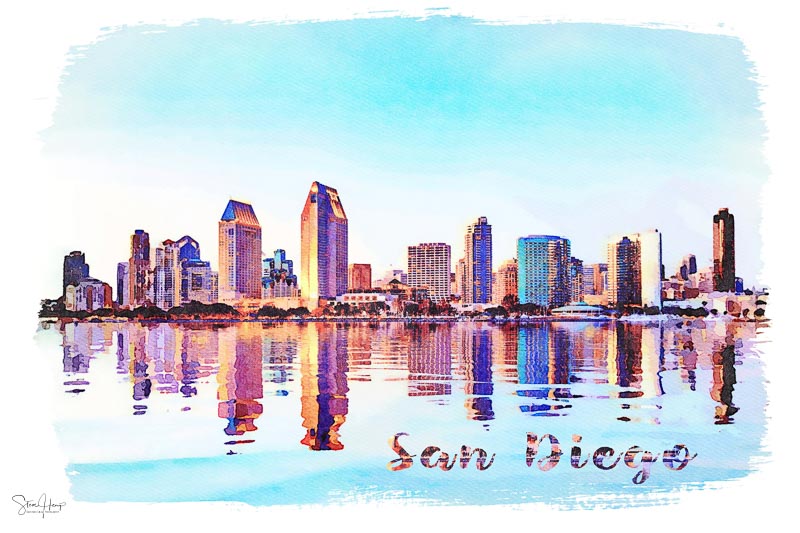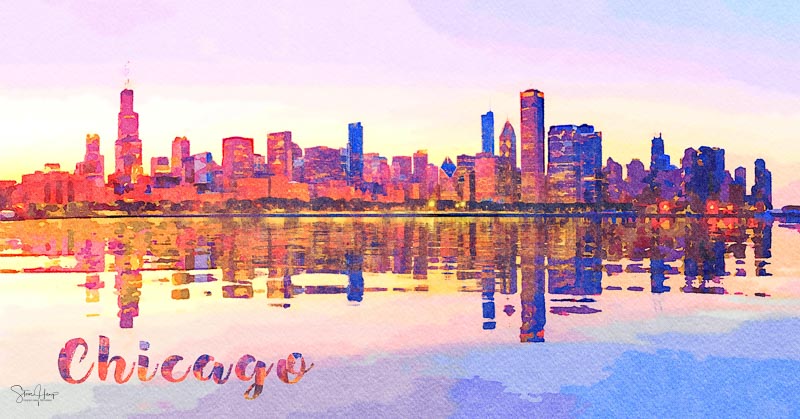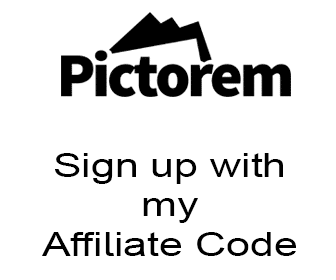Uploading digital art to stock agencies
I’m not saying that this is the route to wealth and success, but having created my digital paintings for the Fine Art sites like Fine Art America and Society6, I started to wonder whether these same images would sell on the normal stock sites. After all, they could certainly be sold by others (via an enhanced or extended license) and so perhaps a painting of a city skyline might make some money?
This is the image that I decided to experiment with. But how to do it? I created the painting with Watercolor Studio from Jixipix and added the text by using a free (and commercially licensed) font called Hensa. If you type the words as normal and get the right size, you can then right click the text to make it a selection in Photoshop and then move the selection over some of the painted areas to create a title for the piece that looks as though it has been painted in some way. Then I saved it as a full sized Jpeg to upload to the various fine art sites. The stock agencies, however, are more demanding!
I found that I could submit to all sites via Stock Submitter as normal. In that program, I marked the file as an illustration and made one of the categories and Abstract category. I described it as a digital painting of San Diego Skyline. For all the sites except Shutterstock and Bigstock, that is all I had to do – I could upload and submit as normal without any issues. The two exception sites needed a “sort of” release though. They need a Jpeg of the original photo to be submitted as though it was a property release. In Stock Submitter, this means creating a property release from a copy of the original photo and attaching it to the main painted file before upload to Shutterstock and Bigstock. There is no text in the property release – it simply is a copy of the original photo so that they know that you own the copyright of that image. With that in place, the upload sailed through their review process.
But will it sell – I don’t know! It is online now and I will let you know if it ever achieves some sort of “lift off!”
My second attempt is going to be this image of Chicago – a slightly different style, but recognizable all the same. I’ll upload this and perhaps do some more in the next few days.









Interesting idea Steve. Good luck. I will await your updates with interest
Kevin
Good luck. I found out the process of submitting illustration to SS last week when trying to submit my first one. Annoying.
Thanks for this info, Steve.
You inspired me to have a go at applying filters to one of my standard stock photos, to make it look like an impressionist painting, and then submitting it, as an experiment, to Shutterstock, where I send most of my stock work.
I ended up sending it to them four times altogether. Two submissions were one photo and one illustration, without a reference JPEG. The other two were again as a photo and as an illustration, but this time accompanied by a reference JPEG.
Guess what? Each submission that I designated as a photo was rejected for the reason that I ought to have labelled it as an illustration. Meanwhile, the two submissions that I’d classified as illustrations were rejected because I ought to have sent them as photos!!!
Needless to say, I’ve given up on sending this type of image to Shutterstock, to try to preserve the few remaining strands of hair that I haven’t pulled out of my head!
Out of curiosity, I also emailed Alamy’s contributor relations department the image I’d been trying to submit to Shutterstock and asked them whether Alamy generally accepts this type of filtered image. They replied that, while they don’t edit the actual content of submissions, it might possibly be rejected at QC for being too heavily manipulated.
Surprisingly (well, to me, at any rate) Alamy also said that, even though the manipulated, impressionist painting version of the photo contained people who had all been rendered blurred and unrecognisable by the filters I’d applied, I would still have to provide model releases for all the people in this type of image in order for it to be available for commercial use.
Hi Peter. Sorry it took me so long to approve – I’ve just got back from a long trip. As a result, I don’t know yet if any of my manipulated images have been sold on the microstock sites, but I’ll check shortly and see if there was any interest in them. That Alamy restriction is annoying as well – I think they even need releases for body parts (although I never send those so I guess they just show in the agency as images without releases.
Steve